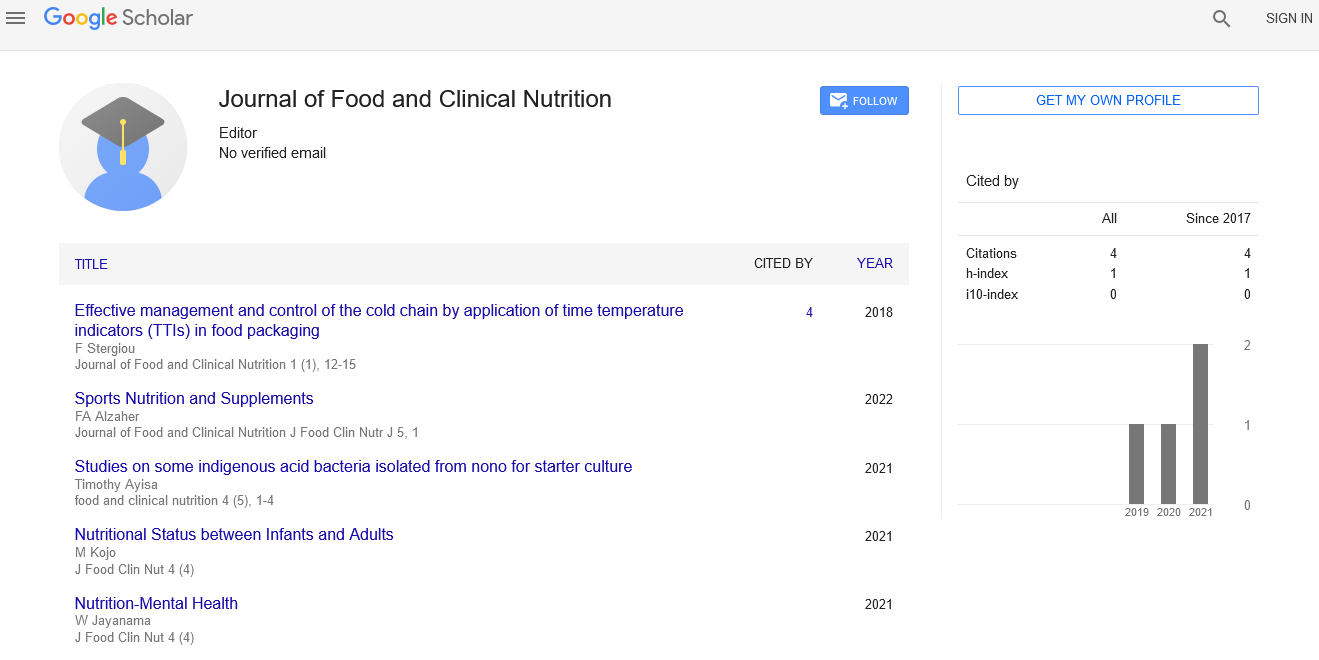Findings of a post-market study variable on the safety and usage of an amino acid-based formula for children
Received: 05-Jan-2022, Manuscript No. PULJFCN-22-4768 ; Editor assigned: 08-Jan-2022, Pre QC No. PULJFCN-22-4768 ; Accepted Date: Jan 07, 2022; Reviewed: 18-Jan-2022 QC No. PULJFCN-22-4768 ; Revised: 23-Jan-2022, Manuscript No. PULJFCN-22-4768 ; Published: 29-Jan-2022
This open-access article is distributed under the terms of the Creative Commons Attribution Non-Commercial License (CC BY-NC) (http://creativecommons.org/licenses/by-nc/4.0/), which permits reuse, distribution and reproduction of the article, provided that the original work is properly cited and the reuse is restricted to noncommercial purposes. For commercial reuse, contact reprints@pulsus.com
Abstract
The study's main goal was to determine the incidence and nature of Adverse Events (AE) in babies who were given a hypoallergenic amino acid-based baby formula. The demographic description was a secondary goal
Commentary
Baby equations are much of the time used to enhance bosom milk, the highest quality level in newborn child taking care of, or utilized only for babies whose moms can't or decide not to breastfeed. Around 2.5% of new born children require elective recipes not in light of flawless cow's milk protein Cow's milk protein sensitivity (CMPA) is one of the significant food sensitivities experienced by babies and youngsters Widely hydrolyzed recipes (EHF) are suggested by the American Academy of Pediatrics (AAP) for the dietary the board of newborn children who are unfavorably susceptible or bigoted to unblemished cow's milk-based newborn child recipe (CMF); be that as it may, a subgroup of these newborn children can't endure EHFs.6 For these babies or those with various food sensitivities who show unfortunate development, amino corrosive based equations (AAFs) have been demonstrated to be successful, all around endured, and support development . The nitrogen source in AAFs is without any trace of flawless proteins or peptides, and accordingly they display an exceptionally low degree of allergenicity. As per the AAP,6 a newborn child equation is thought of "hypoallergenic" solely after being tried in newborn children with touchiness to cow's milk or cow's milk-based recipe, checked by appropriately directed disposal challenge tests. While serious food sensitivities, and CMPA specifically, are the essential sign for an AAF, these equations are likewise used in the administration of malabsorption/maldigestion disorders, short gut disorder (SBS) various food sensitivities eosinophilic gastrointestinal(GI) problems, for example, eosinophilic esophagitis (EoE) gastro esophageal reflux illness (GERD) and food protein prompted enterocolitis disorder (FPIES). Babies and youngsters with conditions requiring an AAF are inclined to a wide assortment of infection and drug related side effects. Sometimes, these side effects might be overseen by clinical or dietary mediations, however in different cases, they may keep on introducing. A portion of these side effects cross-over with normal circumstances experienced by solid, term newborn children In every single clinical preliminary, noticing the rate and nature of unfriendly occasions (AE) is a basic part of consistence with Good Clinical Practice (GCP) rules. In this specific situation, likewise understanding “normal" or expected conditions that happen during outset(e.g., cold and gastrointestinal sicknesses), and specifically, side effects frequently connected with the high-risk populace for which AAFs are as often as possible recommended is a basic focal point through which to see AE related with such equations.The current review is the principal post-market reconnaissance (PMS) Program of a hypoallergenic amino corrosive based newborn child equation. PMS programs give genuine security and observing information, alongside adding to the study of pharmacovigilance. This strategy takes into account the evaluation of patients who really get the treatment, and frequently incorporates patients outside the populace surveyed in early security and viability studies. The essential point of the PMS program announced here was to additionally assess the wellbeing of a marketed hypoallergenic AAF in a genuine world, daily schedule, andclinical work on setting by evaluating the recurrence and nature of AE in babies took care of the recipe. The optional targets were to portray segment and clinical attributes of babies took care of the AAF and their correlative food consumption, as well as guardian fulfillment with the equation
Conclusion
HAA utilization by babies with CMPA, extreme CMPA and malabsorptive circumstances doesn't give wellbeing concerns what's more, is related with a serious level of parental figure fulfillment. Utilization of HAA in babies showed no surprising side effects in this PMS program. SAE announced were not connected with recipe use, 89% of AE were named by the same token "Irrelevant" or “Impossible." to be connected with the recipe. The AE announced in this study are normal among newborn children with the judgments addressed in this review
Key Words
Hypoallergenic; Hydrolyzed; Eosinophilic esophagitis; Gastrointestina





